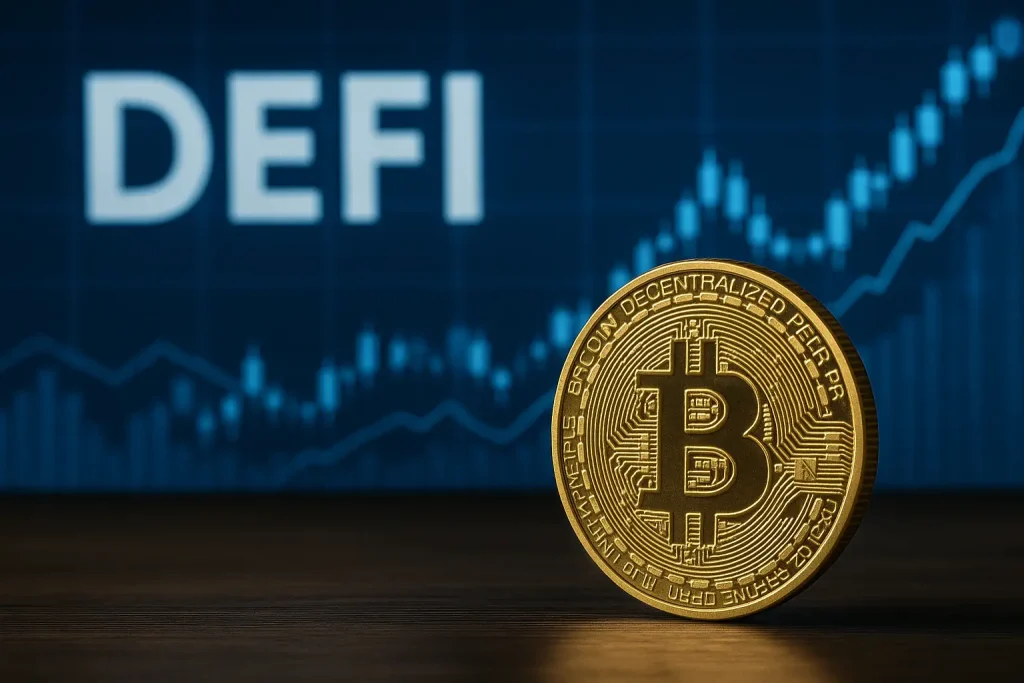Decentralized finance is redefining the infrastructure of modern economic systems. Built on blockchain protocols, DeFi removes traditional intermediaries from financial transactions, enabling users to lend, borrow, invest, and transfer assets directly through decentralized platforms. This shift is not only technological—it represents a fundamental change in how individuals and institutions engage with value and control.
The growth of decentralized finance is closely tied to broader digital transformations. As global commerce moves toward tokenized systems, digital identity frameworks, and real-time cross-border transactions, DeFi becomes a key component of this evolution. Understanding its role in the emerging economy requires clarity about its mechanisms, risks, and strategic implications.
Redefining access and control in financial systems

Traditional financial infrastructure has long been marked by centralization, gatekeeping, and fragmentation. In contrast, decentralized finance operates on open protocols that prioritize permissionless access and transparency. Anyone with a digital wallet and internet connection can participate, regardless of geography or institutional affiliation.
This shift expands inclusion and changes power dynamics. Control over assets, once mediated by banks and brokers, is now handled through self-executing smart contracts. These mechanisms reduce friction and offer users greater autonomy—but they also transfer responsibility. In decentralized systems, security, governance, and asset management are more individual than institutional.
New models for liquidity and asset creation
One of the defining features of decentralized finance is the creation of programmable liquidity. Automated market makers, yield farming, and token staking mechanisms allow for continuous asset circulation without relying on traditional buyers and sellers. These systems increase capital efficiency and support real-time reallocation across markets.
In addition to managing existing assets, DeFi supports the creation of new ones. Tokenized representations of currencies, commodities, and synthetic instruments can be issued and traded on-chain. This expands what constitutes an investable asset and enables faster experimentation. However, it also introduces new regulatory and valuation challenges that require careful oversight.
Managing risk and system resilience
While decentralized finance offers flexibility, it also presents unique risks. Smart contract vulnerabilities, protocol failures, and governance disputes can lead to rapid asset loss. Liquidity pools, in particular, are sensitive to volatility and manipulation. Users must evaluate risk exposure not just at the asset level, but across entire ecosystems.
Decentralized finance impact on digital economic infrastructure
The integration of DeFi into broader digital ecosystems is accelerating. Payment networks, identity verification systems, and decentralized storage are increasingly linked to financial protocols. This convergence supports a new model of infrastructure where transactions, identity, and ownership are coordinated across layers.
Governments and institutions are beginning to explore regulatory frameworks that can accommodate the principles of decentralized finance without stifling innovation. The outcome will shape how these tools scale and how they interact with centralized finance and public systems.
Outlook: autonomy, scalability, and integration
Decentralized finance is positioned as a foundational layer in the digital economy. Its emphasis on autonomy, transparency, and interoperability makes it a catalyst for broader transformation. Still, its long-term influence depends on how it handles complexity, risk, and adoption beyond niche communities.
As integration deepens, DeFi’s value will lie not in replacing existing systems, but in complementing them. When designed responsibly, decentralized tools can extend financial access, reduce systemic bottlenecks, and support a more adaptive economic model.



